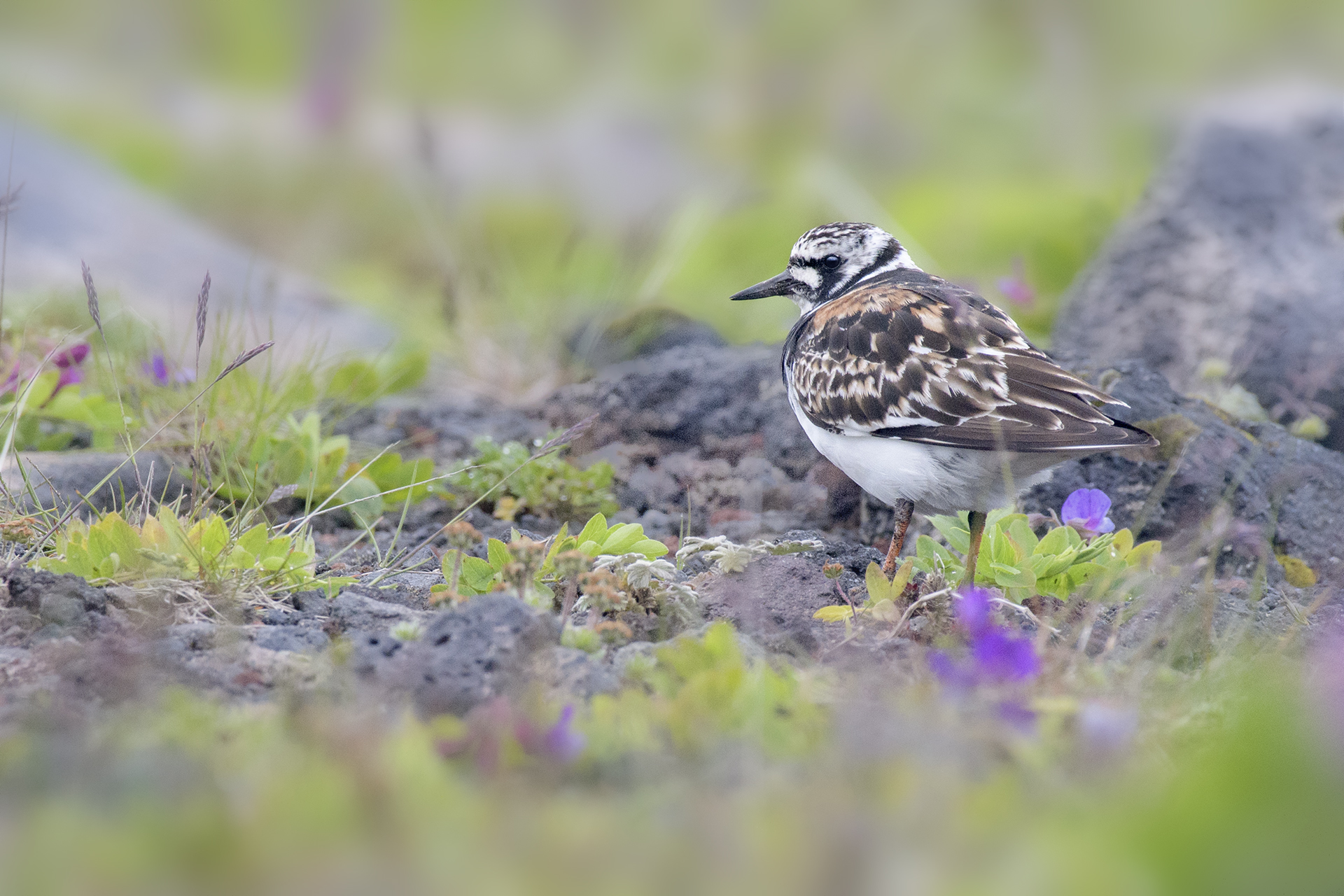I’ve been looking through my photos from my trip to St. Paul Island this past July and picking out a few to work on. Here are two that I processed the other night.
First is a cute little seabird called a parakeet auklet:

I love his adorable blue webbed feet and the white streamer (“plume” is the more accurate term among birders). The thing at the back of his beak is thought to be part of the bird’s desalination system—seabirds drink seawater, but can’t tolerate the salt any better than you or I can, so they have internal mechanisms for removing and excreting it.
Auklets, like their cousins the puffins, are pelagic, meaning they spend most of their life at sea. They come back to land only in the summertime to mate, lay an egg or two, and raise their chicks. And the only place they’re found in the world is in the northern Pacific Ocean and the Bering Sea. We saw three kinds of auklets on St. Paul Island: parakeet, least, and crested. There’s a fourth kind, called the rhinoceros auklet, which is larger and is sometimes considered a kind of puffin.
The other photo I worked on is of a shorebird called a ruddy turnstone, picking its way through the tundra vegetation on St. Paul:

This one is a female, I’m told; the male has more exaggerated color. The Cornell Laboratory of Ornithology—an excellent site for bird information—says “it almost looks like a calico cat.”
I had just seen ruddy turnstones on the New Jersey shore in May, so I was a little confused about what they were doing up in the Bering Sea in July. It turns out that they breed in the summer in the northern reaches of North America and come south to the Pacific and Atlantic coasts of the U.S. in the winter—but, according to Cornell, “many nonbreeding birds also hang around the coastal shores in the lower 48 even in the summer.”
P.S. Sign up to get an email notification whenever there’s a new post on this blog. Just scroll to the bottom of the page and enter your email address in the box next to “Subscribe.”


